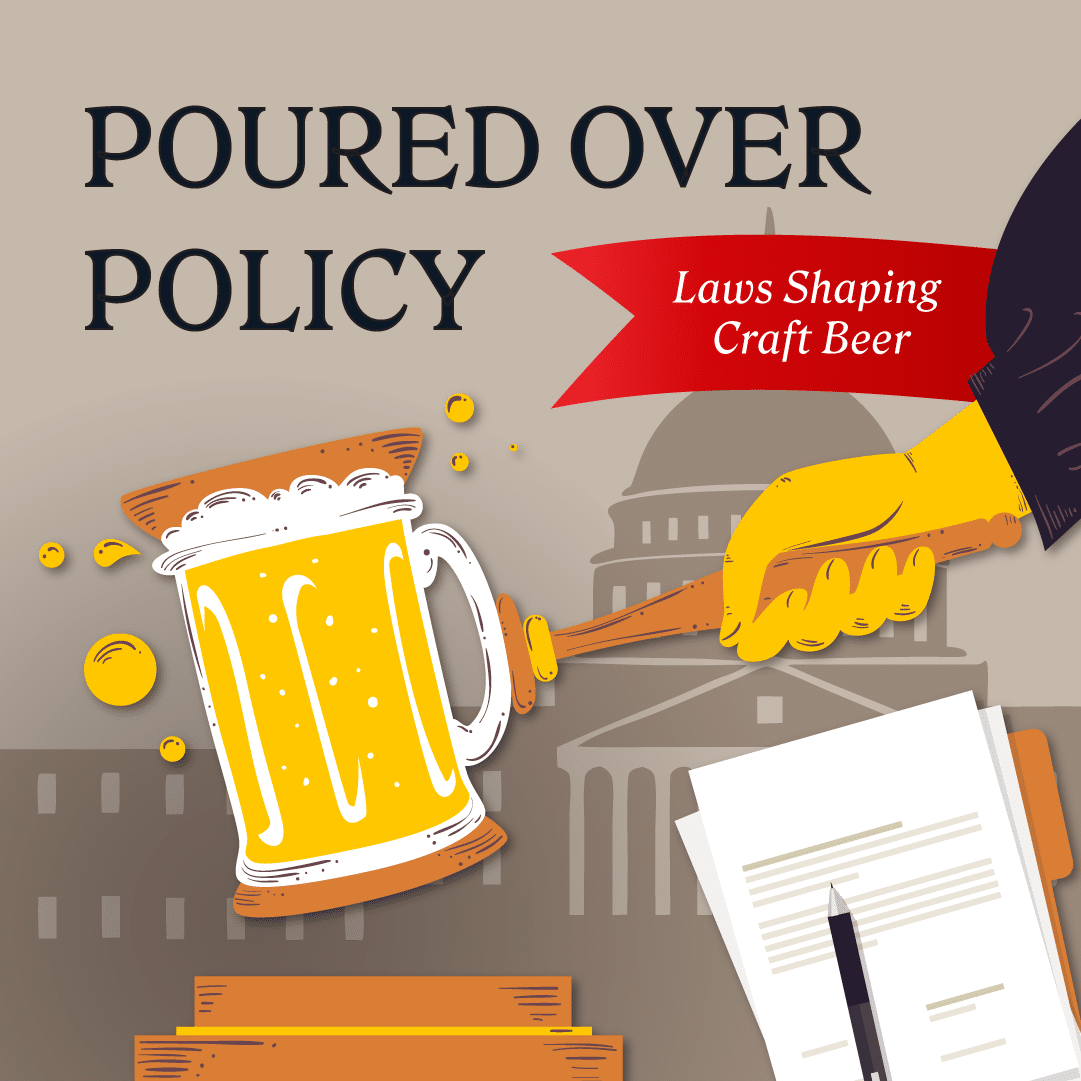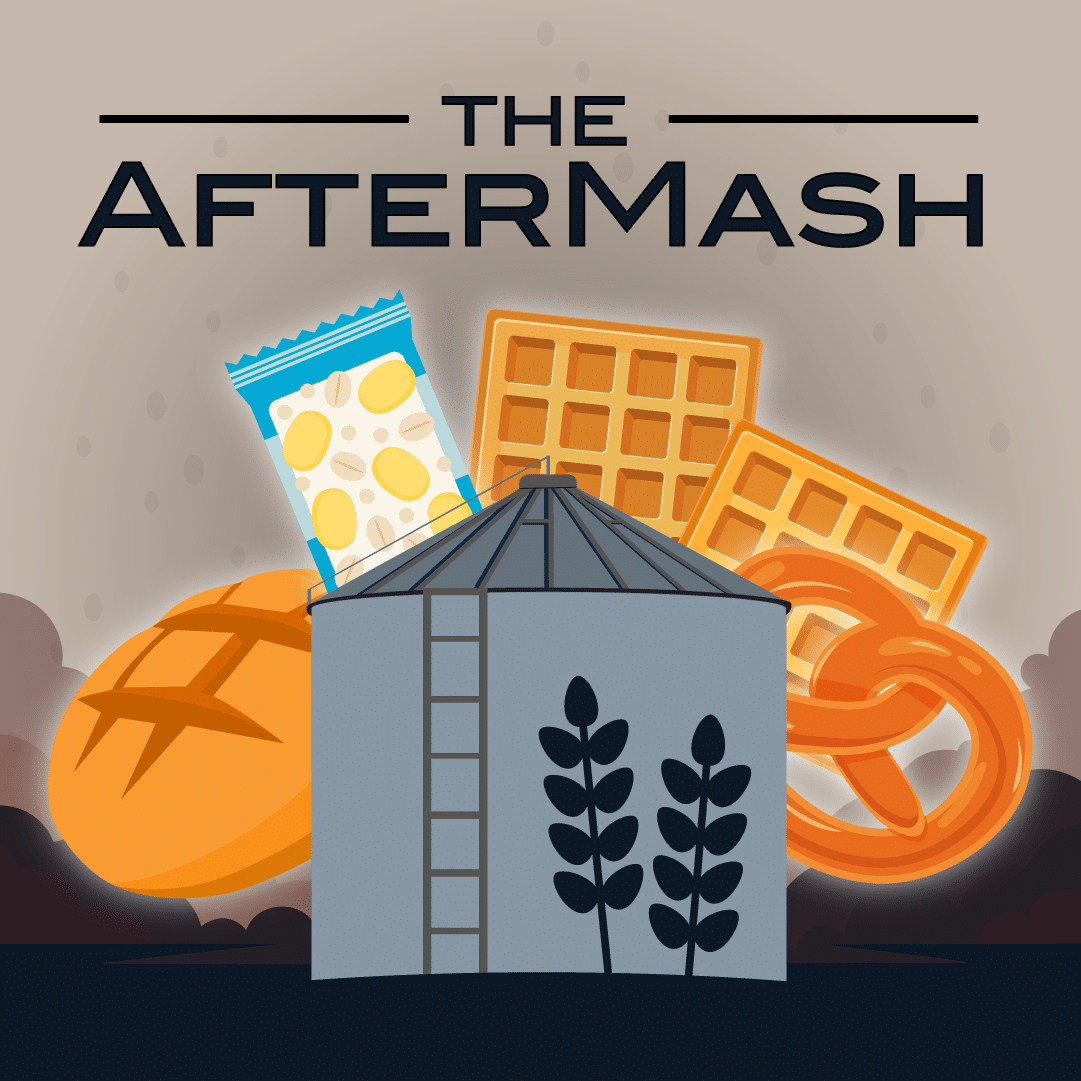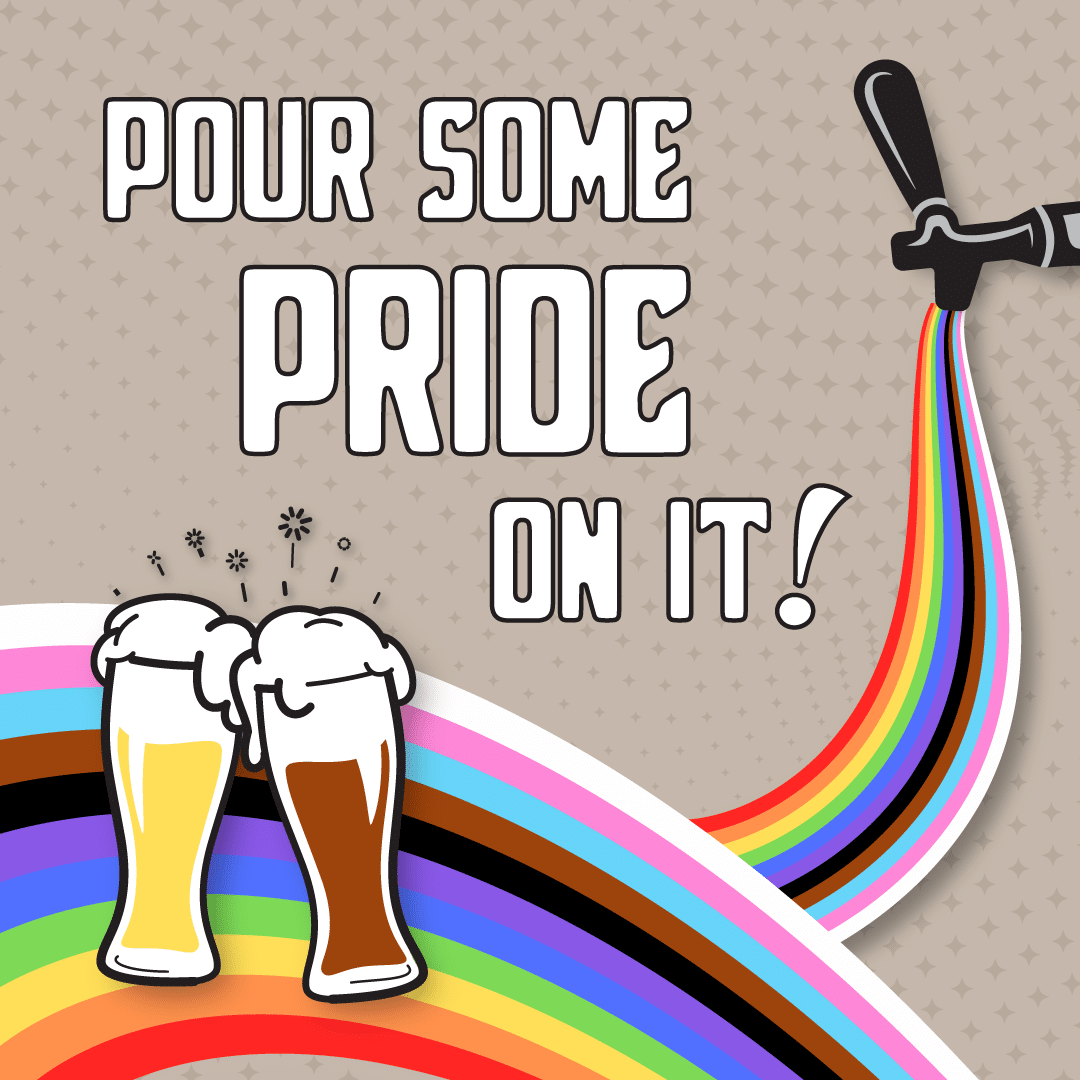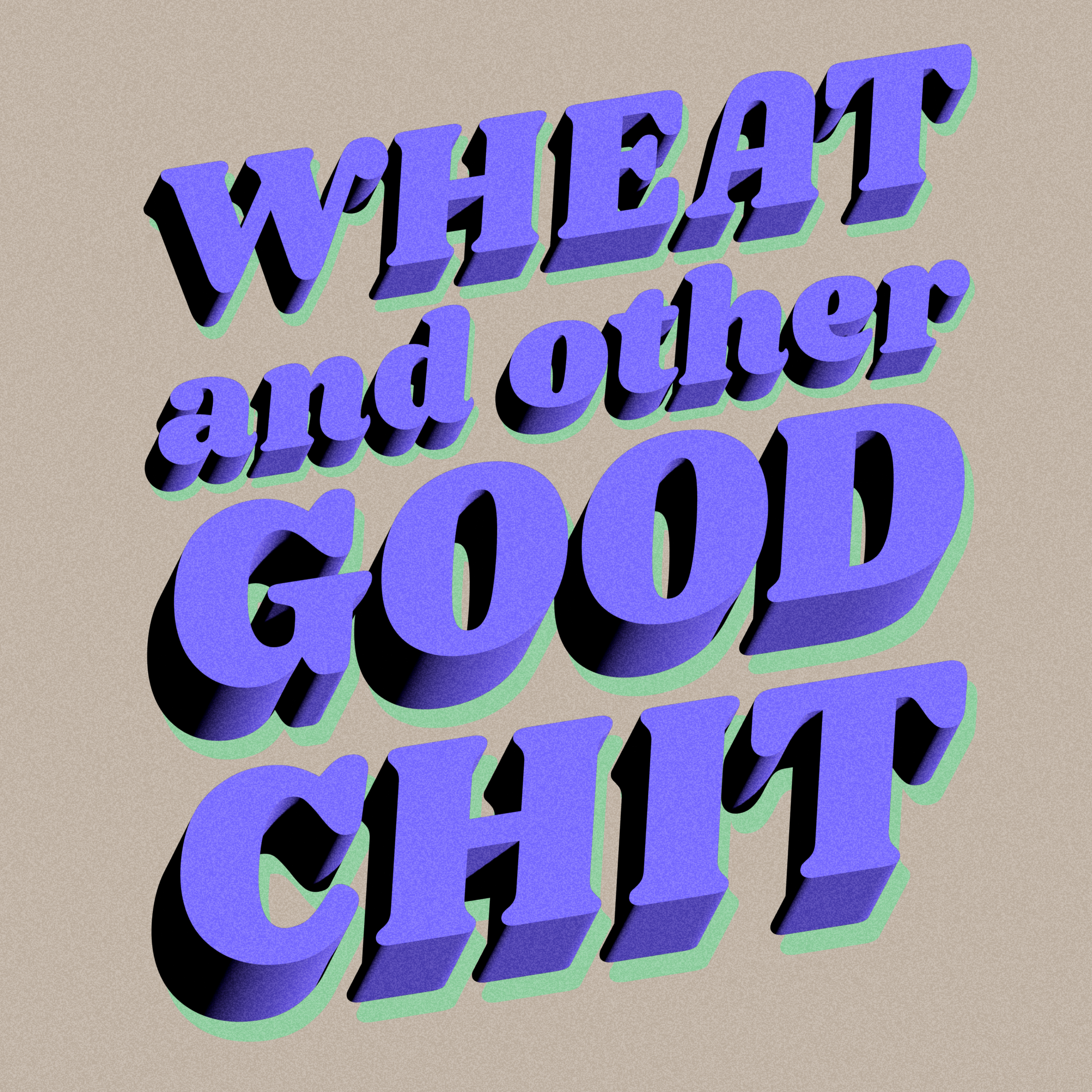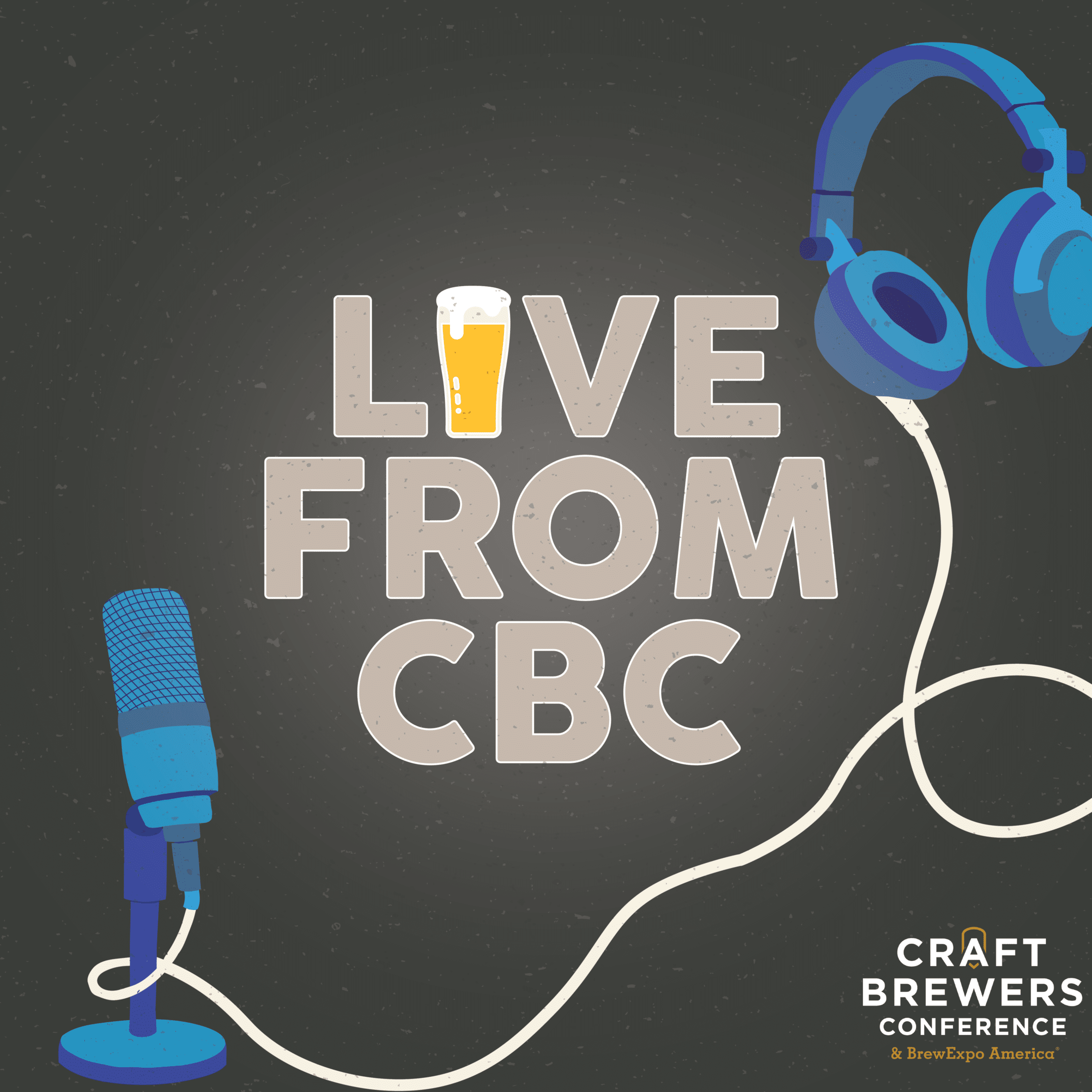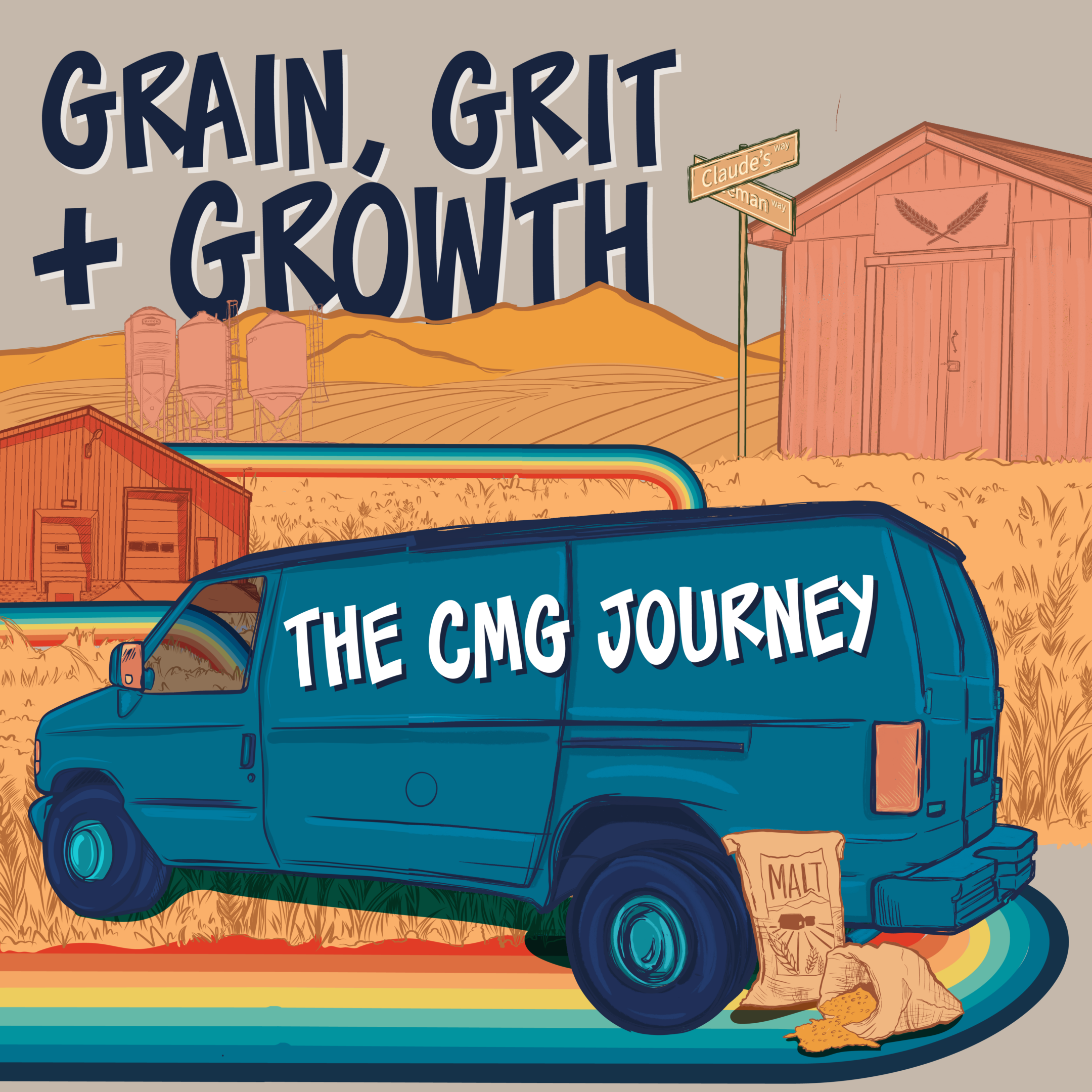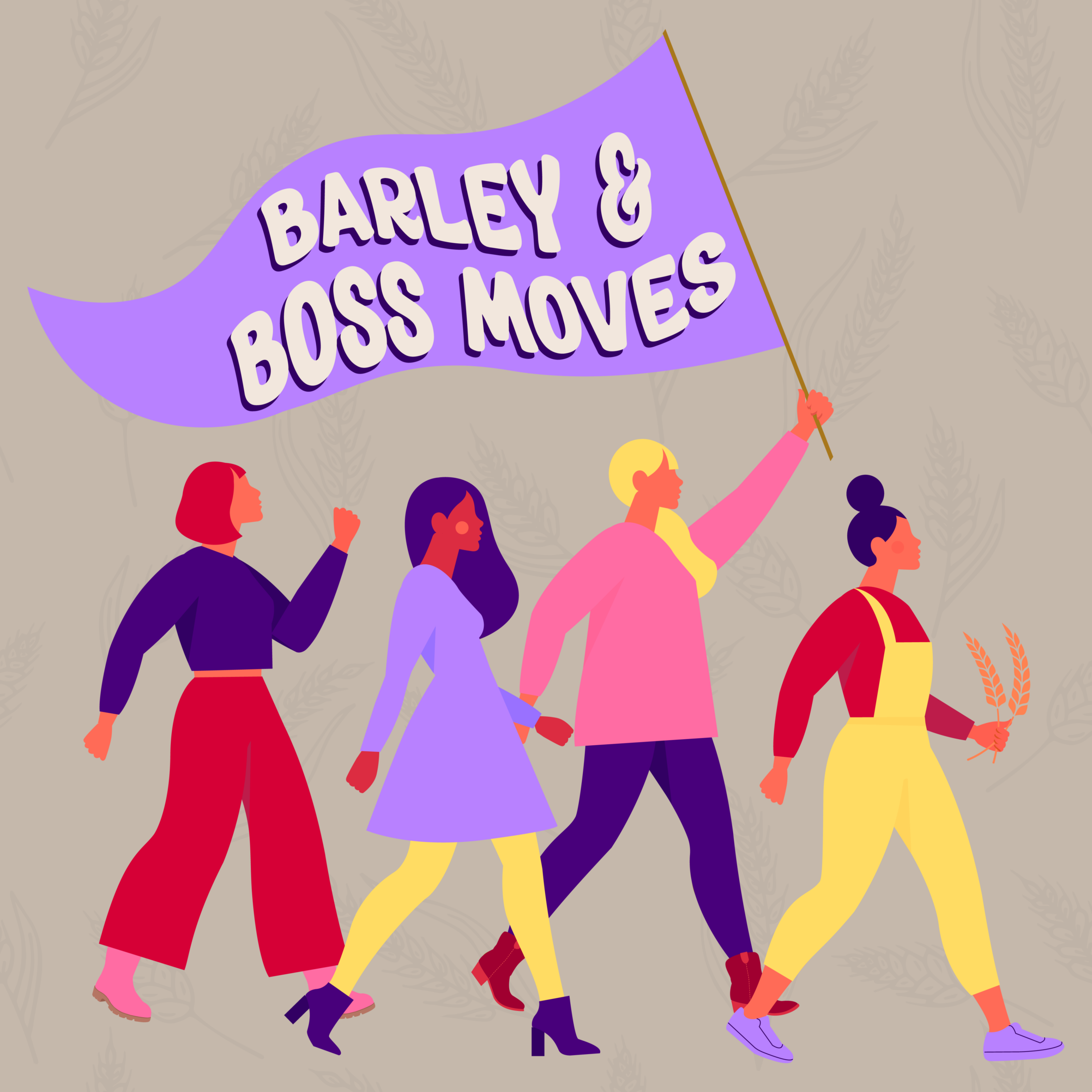
PODCAST GUESTS
Phil Markowski
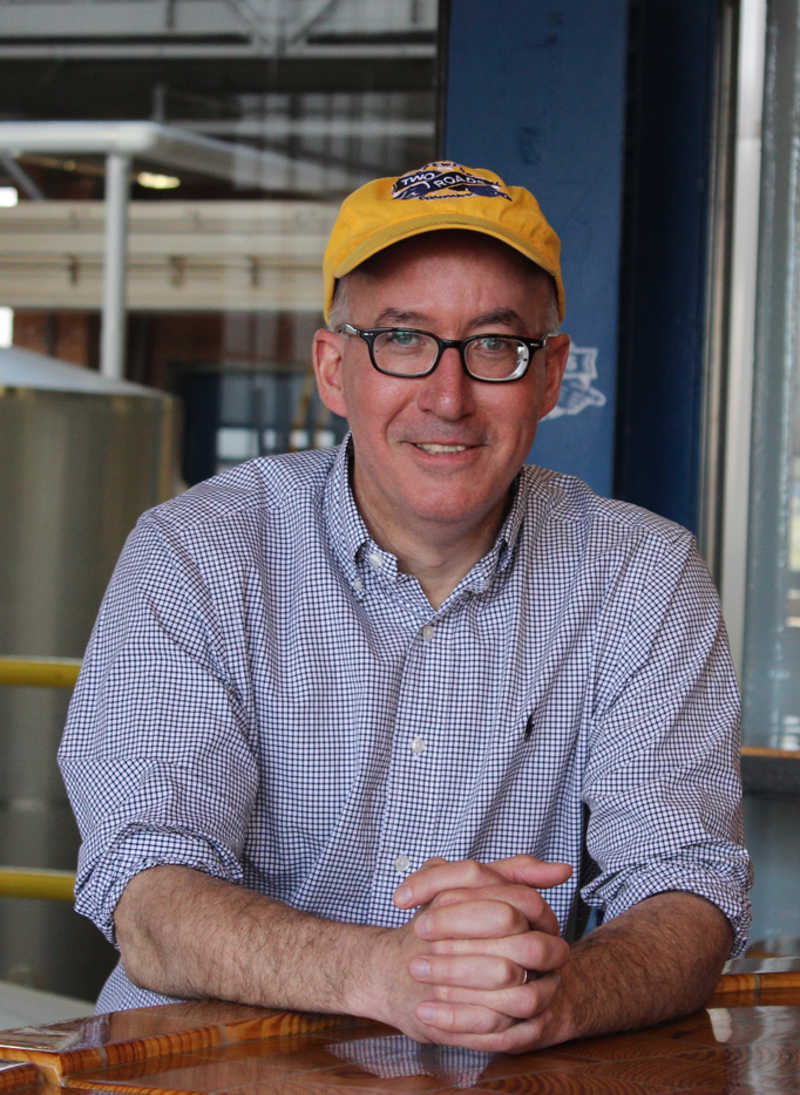
Townes Mozer

John Watkins

MORE EPISODES
SEASON 3, EPISODE 22: BREW-VERSIFICATION
PODCAST HOSTS:
TOBY TUCKER – DIRECTOR OF SALES, COUNTRY MALT GROUP
GRANT LAWRENCE – TERRITORY MANAGER, COUNTRY MALT GROUP
HEATHER JERRED – TERRITORY MANAGER, COUNTRY MALT GROUP
GUESTS:
PHIL MARKOWSKI – BREWMASTER, TWO ROADS BREWING
TOWNES MOZER – FOUNDER & OWNER, LENNY BOY BREWING
JOHN WATKINS – HEAD BREWER, LENNY BOY BREWING
Key Points From This Episode:
- When and how they decided to add new craft beverage offerings (distilling and kombucha-making)
- Challenges they’ve overcome in learning a new craft.
- Which ingredients overlap between the two.
- How they keep employees engaged and creative in the process.
- What advice they have for breweries wanting to add a new revenue stream.
Transcript - Brew-versification
EPISODE S.3, E.22
[BREW-VERSIFICATION]
Grant:
Season’s greetings from the BrewDeck Podcast. I’m Grant Lawrence, joined by my co-host Toby Tucker and Heather Jared. On today’s episode, we’re shaking things up and brew-versifying this one with guests from a brew distillery and a brew boochery, that’s beer and kombucha. To learn the ins and outs of adding a new craft to your operations with opportunities to overlap ingredients, keeping employees creative and adding a new revenue stream. You’re in for a real treat.
We’re sitting down with Phil Markowski from Two Roads Brewing in Connecticut plus Townes Mozer and John Watkins from Lenny Boy Brewing in North Carolina. Before we get started, just a quick reminder that pre-orders are still open for the Sixth Annual Pink Boots blend. The blend features Loral, Ekuanot and HBC 586 varieties. Contact your CMD sales rep to pre-order before December 31st.
Toby:
Well, we’re having a good day on this show and we are honored to have this individual come and join us on. And I got to be honest, we got really lucky wrangling him on and I’ll tell you a little bit more about that when we introduce him. But really happy to have Phil Markowski on. Phil’s got a very lengthy background in brewing. And he is Master Brewer and I believe part of the founding group over at Two Roads Brewery, correct?
Phil:
That is correct. So yeah, I’ll give you a little bit of a bio. So going in reverse, Two Roads Brewing Company, we’re celebrating our 10th anniversary officially in a couple of weeks in the middle of December. And I’ve been, as you mentioned, one of the founders there and Master Brewer since the beginning. Prior to that, I was with Southampton Publick House, Eastern Long Island for about 16 years [inaudible 00:02:04]. And then for six years, it changed. Before that, I was brewmaster at New England Brewing Company, which there is another incarnation that exists now. But I was at the original facility, which is located in Norwalk, Connecticut and we started that brewery in 1989.
So it was one of the early craft breweries in New England at that time. It’s hard to imagine now, but I think there were approximately 100 breweries of the US, craft breweries, at that time. So now we’re looking at 100 times that amount. So really, it’s been quite a ride. And back in those days I wouldn’t have imagined that they would be closing in on 10,000 breweries and craft breweries in the US in my career, but here we are.
Toby:
It’s been a wild ride.
Phil:
And it’s certainly not over. So buckle up and let’s see what’s going to happen in the next five, 10 years. But what I have been astounded by more recently is the degree of change and the frequency of change in craft brewing driven largely by consumers. And speaking of brewers who got into the foray of hard seltzer and now the Beyond Beer segment, which brings us to the subject of distilling, which frankly is something I’ve thought about for a lot of years wanting to experiment with but just never did it until we decided to put a distillery into area two, which is our wood aging facility and product development sort of general experimental brewing facility, that’s just 1000 feet down the road from Two Roads, which is our main facility.
So we got into distilling or decided to get into distilling about two years ago, actually close to three years ago at this point. Years just continue to fly by and it’s hard to keep up sometimes, but there’s certainly a strong connection between brewing and distilling as obviously any alcoholic beverage, whether distilled or not, it starts by fermentation, which as we all know is a vital part of a baking beer or at least quality beer.
So distilling is a natural offshoot. And last couple of years I’ve met any number of distillery owners who in most cases didn’t know much about the business or certainly the process before they got into it. So they hired a consultant who, I’ve heard this more than a few times, consultant told them when it’s time for you to hire a distiller, hire a brewer and teach them how to distill because the key is successful fermentation. If you screw that up, there’s no amount of aging, no amount of tricks you could do during the distillation process to salvage something that is a result of a poorly managed fermentation. So that understanding is vital to making quality spirits.
Toby:
Absolutely. So yeah, you mentioned three years ago, y’all started thinking about getting into the distilling realm of things and about six days ago, I’m on LinkedIn and I see Colin Kennedy, your director of marketing, sent out a post that you guys just released, and correct me if I’m wrong here, but first release of London dry gin and some vodka, correct?
Phil:
That’s correct. So these were the first bottles that we put up for sale literally a week ago, day before Thanksgiving. But prior to that we had also quietly then distilling a rum, bourbon, and the was closely related to the type of brewing that we do, which is all malt brewing primarily is an American single malt. So we have these spirits that have been in barrel for the first of which about a year right now. So we wanted to get some spirit aging, begin that process while we were then developing, started development of London dry gin, vodka. Those batches, we did a couple of test runs, refined it on a small scale and then found certainly there’s difference going up to production scale, which for us we have two 1000 liter pot stills. So 1000 liters is roughly in terms of beer barrels, about eight and a half beer barrels or thereabouts, a little less and somewhere around 240 working gallons.
So they’re smallish, but large enough for our needs, which we’re not looking to ship our spirit nationally. We really just want to presell it. And our tasting groups, we have what is about a nine acre campus where Two Roads is sitting on six acres, and that’s at this point 110-year old factory building that we renovated to house Two Roads Brewing Company. And then five years ago we broke ground on our new facility area too. So that was the purpose built facility. I mentioned it’s our barrel aging, [inaudible 00:08:31] aging product development and general experimental brewing facility, which is where the distillery sits or at least the stills sit.
And then we have our barrels in a non temperature control cinder block building, which is kind of on the edge of the property. So that’s there for safe storage of the spirit and also like they do in Kentucky, we like the seasonal extremes of temperature for our brick house, which is very modest compared to what you’d see in Kentucky and Tennessee. So that’s where our distillery flies in a nutshell. We figure it’s going to be years before we have brown spirit barrel, barrel mature spirit to sell, but there’s a couple tricks of the trade we’re going to try and speed up the maturation process, but ultimately we’re not going to rush it. The spirit’s going to be ready when it’s ready. Whether that’s three years, four, five years or more, we plan to be patient with it and continue to taste it, revisit it a couple of times a year and make that decision when the barrel product is ready for sale.
Toby:
Sure. Sure. Well, jumping back, and I think for a lot of listeners out there, and I know both Grant and Heather have attended a lot of different conferences brewing related, but also we’ve been a part of the distilling conventions as well. And it’s crazy how many breweries we see out there on the floor looking to get into the distilling side of things or add in that additional potential revenue stream into their facilities because like you said, there’s a lot of the equipment that is synergistic. So just jumping back a little bit, how excited were you to get to take on a completely different project like distilling?
Phil:
Again, I had a passive interest in distilled spirits over the years with emphasis on scotch, whiskey, Irish whiskey, and those that are reliably single malt whiskeys. That is what beer is. I mean it’s basically you start with what they call wash mostly in the UK, in Scotland, but they call it beer in the US. So it’s basically the base [inaudible 00:11:39] whiskey is basically a beer without hops.
Toby:
Right?
Phil:
So getting back to the logic behind branching out from brewing into distilling, you’re correct in that there’s a lot of the infrastructure already in place. Usually their steam is a heat source, usually there’s, what I call is a cooling source in brewery. You’ve got core drains. You’ve got a lot of breweries course to barrel aging. So these are [inaudible 00:12:13] in out of barrels or used to fermentation. So that’s the beginning stages of any spirit. So it’s the thing of the stills and the science or the process of coaching a spirit out of a fermented wash or beer. So a natural extension. And it’s also a natural extension, let’s face it, of the beer segment of declining in terms of market share and total share of alcohol.
We all know about the overnight success typically of hard seltzers. As much as, I hate to say it took about 10% of the US beer market in about five years, whereas craft beer took basically 30 years to get to a 10 share of total US beer market. So a lot of brewers got into the RTD or the hard seltzer business. Now we have RTDs that are a growing segment, which even more of that infrastructure exists in craft brewery to blend either to ferment a hard seltzer from a sugar base or to blend spirit to make a ready to drink cocktail.
That’s all stuff that exists in a brewery. So getting into that is kind of a no brainer for breweries where a commercial brewery is a business that needs to survive. And so breweries have us and many others have diversified it to areas of beverage that we may not have previously thought about, but were there in part out of necessity, in part out of curiosity. And in my case, in part out of wanting to branch out into other segments of beverage production, not so much out boredom. I love brewing beer more than anything else and always will but it has at times to learn new skills. And that’s what distilling has been. It’s been exciting challenge and there’s many things I have learned in the short time I’ve been doing it and many more things I will expect to learn.
And of course, just like brewing, I never expect to learn everything about it as long as I’ve been or will continue to be in the industry, you’re never going to learn at all. So it’s always something to looking forward to every day.
Toby:
Oh yeah, absolutely. Well, for the listeners out there, and I’m glad you mentioned kind of that insulation and you got to prepare yourself to be relevant in the market if we see some declines, unfortunately. And in my 11 years in this industry, we’ve seen a lot of changes and it’s good to see that people are branching out and doing what they got to do to keep the doors open. So for those listeners out there that are considering folding in distilling as a part of their brewery, what would you say the biggest challenges for you and for Two Roads has been, and any advice you would give to them prior to diving into this venture?
Phil:
Well, one of the real critical things is getting local approval on installing the distillery. The federal government is fairly straightforward. The applications and the way you need to separate, let’s say you’re putting your distilleries, at least the working part of your distillery, your stills in the same building as your brewery, fairly straightforward on a federal level, but it can vary considerably on the state and local level. So that’s a hurdle that some people have to face. And maybe in some cases, it’s so onerous that a brewery has decided not to go into the facility because it’s just prohibitive in terms of the physical space.
Some local authorities may cause you to build a blast proof room around your stills because I mean there is an explosion or fire hazard with distilled spirits. No two ways around about it. Plenty of hazards in the brewery in terms of hot liquids, usually steam flying around, flame, all of that stuff makes breweries dangerous. But distilleries offer potentially danger on top of what we normally face in a brewery.
So state local authorities differ in how they deal with that. In our case, we were pretty fortunate to have a reasonable dialogue with the local authorities and come up with solutions that work across us, enormous amounts of money to make this happen. Otherwise, frankly, it wouldn’t have happened. So that’s really, that’s a big key. If you get past all of that, I mean fermenting, say you’re making an old malt whiskey, lot of parallels to how you make beer, but there’s ways you can bury the fermentation, use different yeast cultures, mixed culture for a rotation to that is an exciting area of distilling that I think hasn’t really been traditionally explored, that I think somebody who transitions from craft brewing into distilling, that’s something I think they can help offer the industry as a whole. And I’m speaking primarily of the craft distilling industry in the US.
I think there’s some ways that craft distillers could create different and unique products that help them stand out just as we’ve done in the production of beer. So that to me is kind of a hopeful outcome that maybe a decade or two down the road we could start to see evidence of because US craft breweries are very creative, not shy about experimentation or breaking the rules. So I think that if we continue to get a lot of crap where it’s transitioning into crop distilling, I think there’s going to be some exciting things happening over the next probably 10 to 20 years.
Grant:
Is there something like a current beverage or beer you’re making at, um, Two Roads that translates perfectly over to distilling? Is there kind of like a base beer, if you will, for distilling or any other kind of current carryover like you were describing, just experiments y’all are working on?
Phil:
Sure. One example is this happened in part, not by accident, but it was perhaps surreptitious that we had. So every year we do a barrel aged pumpkin ale called Roadsmary’s Baby and it continues to be 10 years later, one of the more popular seasonal products that we produce. Pumpkins ales have come and gone most part, but ours has endured for whatever reason, perhaps because it’s rough barrel aged. So anyway, we had some of that left over in rum barrels. We had 15 or so rum barrels left over and we decided to distill that and make whiskey out it and it worked quite well because it was very low hopping rate in that beer.
So it kind of translates nicely to whiskey. It’s slightly spiced. So there’s some of that spice character that comes through during the distillation, but not strongly subtle. So I think that’s an example of, I hope would be a future symbiotic relationship between our brewery and our distillery that we could take now barrels that we matured spirits in and put a beer in there and get some of that spirit character out into a beer.
And then conversely, if I could foresee times where we might do a single malt whiskey, get that to maturity in an American old barrel as per usual, but finish that off in a barrel that had beer in it. So I could see that kind of back and forth between the brewery and distillery has, as the distillery matures, as we start to get brown spirits from American single malt bourbon and rye whiskey through the whole maturation process, we could start using those barrel from beer and vice versa.
Grant:
Yeah, that is kind of an interesting point. I’ve seen some other craft distilleries doing that as well, and I’ve gotten to have the resulting product of that where it’s a spirit aged in a spirit barrel that was used for beer and then redone with spirit. And man, they always do turn out great, at least the ones I’ve had. They taste more mature, I guess, is how I describe it. Would you agree with that? They just taste more rounded and almost like it was a much older spirit.
Phil:
I think rounded is a good way to put it. Maybe a lot of people don’t know, but it’s very common for a scotch distillery to … They usually age almost exclusively in second used bourbon barrels. Bourbon as I think most people know by law can only be aged in brand new charred American oak barrels. You can’t put bourbon in a used bourbon barrel. It has to be a brand new freshly charred barrel. So the US bourbon industry puts hundreds of thousands of barrels out in the market every year. And a lot of those are bought up by scotch whiskey distillers.
So they’ll do their initial barrel maturation in second used bourbon barrels and then often finish. So when it’s mature whiskey, it’s then finished in a sharing barrel typically in … McAllen is one that’s famous for that, but a lot of scotch distillers do it so that it’s called barrel finishing and that might be six to 12 months in that barrel. And it’s really about obtaining flavor from what was in the barrel prior to that, whether it’s sherry or beer. I mean beer works quite well. What doesn’t work quite well, is a hoppy beer.
Grant:
Gotcha.
Phil:
That doesn’t translate too well when distilled.
Grant:
Seems like you kind of want those big, malty, sweeter beers translate better. I mean that the ones I’ve had have always been, like you were describing, like you said, was it an imperial like pumpkin stout? But I guess the one I had was a Belgian quad and it made a fantastic whiskey afterwards. So very neat.
Phil:
And in terms of American craft distillers in a main product, what the product we’ve produced the most of volume wise is an American single malt whiskey. So this is kind an emerging type of whiskey that’s still being defined, but it is essentially America’s answer to scotch, a single malt scotch.
Grant:
Absolutely.
Phil:
We can’t call it scotch, obviously. It’s not made in Scotland. So American single malt or single malt whiskey is any type of spirit is to be associated with American craft distillers. That’s going to be it. And currently it it’s kind of the wild west in a way. There’s definitely an effort other way to define the style, define what the parameters of American single malt whiskey are and set them and have people work within those parameters.
But for example, there’s not a minimum required aging barrel maturation period as there is with bourbon. So it’s kind of the sky’s the limit. And do I see American single malts being aged in wood barrels that had previously had beer on them? Absolutely. I think that’s a logical part of a relationship of a brewery and a distillery. And if you do both, then you’re basically set up for what I call that symbiotic relationship between the two. So I think that’s going to be a type of spirit to watch coming from craft distillers. Is American single malt is really going to merge? I think as the dominance call it the IPA of American craft distilling as industry matures.
Toby:
Yeah, that’s good. So Phil, talking about single malt whiskey, I certainly don’t want to uncover any secrets going on up there, but are y’all using distilling specific malt or is it, let’s say a two row or a pills that’s coming out of silo? And understand, if you don’t want to answer it, just curious.
Phil:
Well, we’ve done all the above. We’ve also worked with especially malts to get a nuance in the spirit that I think will help set at least the American single malt whiskey aside perhaps from what they do in Scotland. And again, with the thing I wonder about and will take me years to try to get an answer if I ever get an answer is whether or not American brewer or any brewer, it doesn’t have to be American, a brewer who transitioned from brewing to distilling whether their knowledge of fermentation in different yeast strains and the technique of baking beer is an advantage or even a disadvantage when it comes to making an interesting spirit.
For example, I was, as a brewer, slightly horrified to learn that in Scotland, they’ll make a mass just like we do in making beer runoff, put it in a kettle, but they don’t boil it, they just cool it down to pitching temperature and pitch their yeast in. And I think temperature control is not really the forefront of their minds. Granted, it doesn’t really get warm in Scotland, so that may not be an issue, but a brewer would never do a fermentation without boiling the work first. Very selective about what yeast they use, selective about their fermentation temperatures. Are familiar with any range of different yeasts. You mentioned a Belgian quad that was distilled into a whiskey, had a fantastic character. As far as I know, a whiskey distillery in the US or Scotland, I don’t think the ones I’ve talked to don’t really think much about the yeast that they use.
So using a Belgian Trappist yeast or a farmhouse yeast or a British ale yeast, lot of fruit [inaudible 00:31:44] and then you’re distilling your mosh and your beer that you fermented with those different yeasts, you’re definitely going to get a different character. And we’ve done some limited experiments at a small scale at Two Roads Distilling and there have been some very noticeable differences in the spirit that comes out where the only difference is the yeast strains that was used. So I think that’s, as I mentioned earlier, a promising area where I think US craft distillers, who largely start off from a brewing background, I think can excel and make a contribution to the spirit industry at large with their knowledge of the character of different yeast strains and eventually incorporating that knowledge and those techniques into the spirits that they produce. Again, I think that’s an exciting area and that will be emerging.
Heather:
Did you feel like you got the phenols off of the yeast strains?
Phil:
Yes and no. I mean, not everything we get is pleasant. Early on in the ferment or distillation, the first stuff that comes out of the still is referred to as four shots. And it could be off putting in terms of color because basically it’s cleaning out whatever has accumulated on the interior surface of the stills and the denser. So that’s definitely stuff that’s foul smelling, even looks foul and we don’t keep that.
Then you have the next fraction that comes off, or the heads, which besides containing methanol, which is definitely a no note, and a lot of other familiar compounds such as semialdehyde, ethel, alcohols, compounds that exist in all fermentations, to varying brew fermentations to varying degrees but again, highly concentrated during a distillation. That stuff you discard or save and redistill another time, but you don’t collect it and eventually put it in a barrel to age.
So there’s any number of things you get off the stills. And yes, to answer your earlier question feed phenols are part of it, whether they’re generated by yeast or we have made wash with smoked malt and those types of the phenols tend to be … were called high volatility compounds. So these tend to come out late in the distillation process. So I know this is review for everyone, but you’ve got the heads that you will separate and then the hearts that you’ll collect and then you transition into the tails fraction and you may continue to collect some tails. And what I’ve noticed in my limited experiences that you tend to get the phenols later as you definitely have transition from hearts into tails. You tend to pick up more and more of the phenols as you go on. So a seller has to make a decision to when are they going to stop collecting the good spirit, the hearts, and then when are they going transition to collecting all tales for a future distillation. It’s just kind of a balance.
And we found ourselves when we’re doing our American single malt and also when we were doing our Roadsmary’s baby pumpkin ale distillation, that spice character was coming out late in the distillation. So really clearly after we had made a transition into the tails fraction, we started to see those spices come through. So we continued to collect because we wanted that character in final spirit. So just sort of the interesting aspect of it, we did some rum distillations with different yeast or rum fermentations, rum wash fermentations with different yeasts.
And while the raw beer character, if you will, may not have had big differences, the spirits that came out definitely did. So I can’t explain it all scientifically. It’s the art of distillation. It’s where you need to rely on your senses, decide what to save and what redistill another time. That’s part of the art of it. And maybe distiller has their own technique and their own way of working within those parameters. So I hope that response made sense and I hope it was relevant to your question, Heather. Did I answer it?
Heather:
Yeah, no, it’s completely good. It’s really interesting.
Toby:
No, it’s all good stuff. It’s obviously a lot to unpack, Phil. And I know it sounds like it’s been an interesting leap for you guys in what you’re doing. And again, it seems like more and more breweries are making that leap as well.
Phil:
Classic approaches. Okay, you make your whiskeys. You get them in barrel, start the maturation process, but meanwhile you’re making this, you’re distilling and selling a gin so that you have cash flow happening. And once the whiskey is mature, some distillers, they choose to cease producing gin, others continue going on. And even in some cases, distilleries have become better known for their gins and for their whiskeys and they do the opposite.
So it’s a classic approach but yes, that’s where we are now with our plant, with our distiller, I mentioned. We hustle to produce some whiskeys, get them in barrel and start that maturation process while we, as of last week anyway, started selling our gin and vodkas. So classic approach but you had that earlier comment that if a brewery gets into distilling and don’t have three years to wait for whiskeys to mature, I trust you meant that from a cash flow perspective and not from a philosophical-
Toby:
No. Yeah, absolutely correct. Yes. Yep. Yeah.
Phil:
Somebody thinks they’re going to have whiskey in three years to sell, they probably shouldn’t get in the business the first place.
Toby:
Yeah, it makes a lot of sense.
Phil:
But if I could just take a minute to give a shout-out to a distillery in Massachusetts called Berkshire Mountain Distillers, God, it’s probably going on 10 years now. They’ve been doing something called the Craft Beer Distillers Project. I think I have that right. I think that’s proper name, where they’ve been distilling well known regional craft beers and making whiskeys out of them.
Toby:
Yeah, I know. I’m glad you mentioned that. That’s really cool. Well, Phil, thanks so much for joining us and for those listening, if you’re up in the Stratford Connecticut area, go say hello to Phil in the crew up there and support by taking home some of their London dry gin and some vodka, and appreciate you taking out some time to chat with us.
Phil:
And thanks for the invite. Thanks for having me. I’ve enjoyed it and I hope I’ve provided somebody with a takeaway, some new knowledge on the art of distilling and the connection between brewing and distilling, which is quite strong.
Toby:
Appreciate it. Have a good one.
Phil:
Okay.
Toby:
So excited to have these guys on. I know they came highly referred to us from one of our territory managers, Brian Quinn out in North Carolina spoke very highly of them and none of the guest hosts here, the host have a whole lot of experience with North Carolina. So excited to have these guys on. So it’s Townes Mozer and John Watkins, Lenny Boy Brewing. How you doing guys?
John:
Great. How are you?
Townes:
Doing good, doing good.
Phil:
Very cool. Well, before we get into the multifaceted amount of beverages you guys are doing out of, I believe, one facility. Tell me how you got started, how long y’all been around, how Lenny Boy got started.
Townes:
Yeah, so started fermenting products back in 2007, ‘8 in college, mostly kombucha and kimchi. And then one of my buddies was big into beer, so we started making beers in college and having a good time at it. And we were passing out to friends and family and everybody was like, “Oh, your products are awesome. You should try and sell these.” So went on a journey for researching, obviously business development, saving up some money, all those things that make a business succeed.
So did that for a couple years and then got an LLC in August, 2011. And then we first initially started out making kombucha. So I saved it up $10,000, bought 200 gallon vat and ingredients and this, that and the other thing, and labels. And then initially I started out, it was just me, I had another job at the time and hand bottling all the kombucha bottle by bottle.
And then I had probably six accounts in Charlotte that I would go drop off product to. My goal was to get any product that I packaged to a store within 24 hours. So did that for five months. And the facility I was renting out of, I was renting a pallet space literally for 35 bucks a month. After about five months, I needed another additional fermentor and they didn’t have any more space for me. So then I found a small 2000 square foot space in South End, Charlotte, it’s a neighborhood in Charlotte. Kind of at the time, it was up and coming. And I just found a cheap retail space and moved in there with my vat and then added a couple more and then got FDA certified facility that I was running out of and selling product to, all wholesale initially. So I didn’t even have a tap room initially.
And then going out to festivals and different tastings and stuff like that, people would always ask, “Oh, can I see the facility and do you have a tap room?, blah, blah, blah.” And we didn’t at the time, but that demand and asking spawned us to build a 400 square foot tap room. Originally had three taps, then we went to five taps. And then after five, six months of that being a one-man operation, I really couldn’t do everything I needed to do every day.
So there was a home brew shop in town and went in there and I was getting some parts and stuff and John was in there and over the course of the first six months or whatnot, he would always say, “Hey, just let me know whenever you want an extra hand. I’ll put my two weeks in.” So went in there one day for a part and I had 20 million other things to do and I said, “John, all right, put your two weeks in, man. Let’s do this.”
So John did that and then it became a two-man production for the most part, and John’s been with us ever since. So it’s been a fun, interesting ride, I’ll tell you that much. So from there, we started gaining a little bit more traction. John had a pretty extensive home brewing background. So in 2013, I think January of ’13, we got our micro brewers permit and just started literally out on his half barrel system. And then not too long after that, in 2014, we got the next unit over, became available to us. So we doubled up and went to 4,400 square feet and put a little three and a half barrel Portland kettle work system in over there. And then John started doing his work on that side. So we had one warehouse that was strictly beer, and then we had one warehouse that was strictly kombucha, and then we had a 800-square foot tap room that connected the two.
So if you came in, you could see into the kombucha production area. And then on the other side, you could see the beer production area. So we went to 15 taps there and eight months, 12 months in, we quickly realized that, “Hey, this 4,400 square feet for all that we’re doing is not going to work.” So at that point after work, I was driving around in our neighborhood and south end area of Charlotte and looking for rent signs.
And it was at the time when South End was just starting to blossom. Now it’s one of the fastest growing zip codes in the country. So we got lucky, the neighborhood we started out in, and we really wanted to stay in the neighborhood as well, just to keep with our roots. So stumbled upon a 32,000 square foot facility at the time, and everything kind of hit and made sense financially for us.
So we began to build out, got the lease October 30th of 2015, and then we opened September 10th of ’16, so about a 11-month build out or whatnot. And yeah, we moved into this 32,000 square feet coming from 4,400 square feet and we thought we’d never fill it up and this is so much space and blah, blah, blah, blah. But as of April, we pretty much are utilizing all 32,000 square feet. And so again, we kept with that same keeping everything, we can get in this later, but keeping everything completely separate.
So we’ve got our tap room, got 29 drafts, or I guess now 31 draft lines. So we do anything from kombucha, non-alcoholic kombucha to hard kombucha, to your single strand beers, yeasts, different loggers, stouts. Then we delve into sour beers as well. And then we also have some different stuff. We’ve got a hard tea on right now, make every once in a while we’ll make in June, which is a honey kombucha and a bunch of different other fun ferments.
So really we just love the art of fermentation and what all it can bring, combining simple ingredients and letting something ferment and creating something that you cannot create on your own. So yeah, we just love fermenting here and the large facility allows for complete separation of different products. And yeah, that’s kind of the backstory. I named Lenny Boy after my dog, so man’s best friend, both the booch, the beer and the dog. And yeah, we’re just having a lot of fun and we feel like we’re … From moving, and we started out at our old facility, we were operating on pretty much a home hot water heater. We were bootstrapped in every way possible at our original facility. And when we moved into our new, facility-
John:
That wasn’t particularly fun, using that all our hot water.
Townes:
And at our old spot, we had a standard water flow coming into the building. So if one side was doing something with a bunch of water, the other side couldn’t. So we went through a lot of hardships and we had a checklist of various things that when we moved into the next facility that we wanted to take out of the equation. So this new facility that we got in ’16, really checked every single box that we can imagine and more.
So now we’ve got our tap room, we’ve got a pretty kombucha production area, beer production area, plenty of walk-in space and storage. And then we just finished up a 6000 square foot event hall on site. So you can do anything in there from corporate parties to weddings to fundraisers to anything for the community that wants to get together and have a good time and drink some Lenny Boy.
Toby:
Gosh, I feel like a complete failure. I mean, it sounds like you guys have done more in 10, 11 years than I’ve done in my entire life. Gosh, it’s quite the accomplishment.
Townes:
I mean, we’ve been working hard at it and we’ve got a really good team behind us as well. So we’ve just been constantly nonstop working towards certain goals. And now in the past year, we’ve kind of checked a lot of those boxes and we won a US open beer award this year. And then we just got a gold medal for GABF as well, this past GABF. So we’re kind of hitting our stride now and we’re really excited and happy to keep it flowing.
Toby:
Man. John, I bet you’re excited too that when somebody flushes the toilet, it doesn’t affect the flow into the brew house, right?
John:
Oh yeah, very much so. I mean, our old facility, my first two and a half hours of my brew day would just be heating up water for the rest of the day. So it was quite challenging in the beginning.
Toby:
Yes. Well, so this is a little bit backwards than I originally thought, right? So you guys started with kombucha? Correct? And then moved into brewing beer once that started taking off a little bit. So John, I might have missed it. So you just dabbled a little bit in brewing before coming on board with Townes?
John:
Yeah, so I was managing the home brew shop in town while taking some [inaudible 00:51:53] courses and Townes would come in, I would chat with him and yeah, I was like, “Hey, if you never need a hand, you should probably start making beer.” Giving him some hints. And then eventually it happened and I came on board. We started pushing the boot harder. I brought my pilot system in and started doing some one off stuff once we got that license to do so. And then obviously having alcohol helps bring people into a tap room.
So it was kind of a snowball effect over where the hot rail system wouldn’t work anymore. I needed something bigger. And that’s kind of a natural progression there. Like Townes said, it’s just constantly working towards getting the product nailed down and more people in and all that good stuff. And it’s funny to hear the history said out loud because you always just take it day by day and you don’t always reflect back at how much has been accomplished. It’s kind of crazy.
Toby:
Yes. Yeah, that’s awesome.
Townes:
And to John’s point, when it was just kombucha, we had a tap room and it was just serving kombucha and there would be a rowdy crowd that would come in and they’d be like, “Oh, let me get a pint of, a lugger of some beer. And we’re like, “Wow, well this is just kombucha and there’s no alcohol in it.” And with John’s background and people coming in and be like, “Well what the heck is this place? You don’t even serve alcohol.” It just kept pushing us to get it. And the other thing too is monetary. So to buy a beer system, it takes a good chunk of change. So on the kombucha side, we had modified some things to where the barrier to entry was a little less hurt to the bank, so that the kombucha really allowed us to start building a P&L and get some revenue going to then reinvest it back into the company and get a larger beer system.
Toby:
So the nickname out there is the Booch? Is that what I heard, John?
John:
The Booch.
Toby:
The Booch. First of all, I’ve never heard. Secondly, I do like kombucha. I enjoy it. It’s not something that I’m overly familiar with. I don’t deny it. But for the listeners out there and for us, tell us, I guess, the process of making it. Are there any similarities or synergies coming from brewing world, and what that looks like?
Townes:
Yeah, so kombucha, it’s a fermented tea. It’s got a lot of B vitamins, probiotics, amino acids that are created during the fermentation process. Ferments for about 30 days, so a little bit longer, kind of like a lugger in essence. A lot of the same equipment, bright tanks, pumps, clamps, hoses, all that stuff. The one difference is on the kombucha side, it’s aerobic respiration, so it’s using oxygen. So we have 2940 barrel variable capacity wine fermentors. And so the tops are not on those. And in essence, it’s a muslin cloth that allows oxygen in and out.
So the number one killer of beer is oxygen. But ironically, on the kombucha side, you need oxygen to ferment. Yeah. But besides the tanks in that regard, a lot of the other things are the same. The product is naturally gluten-free, so that would be obviously a differential from beer. So the main ingredients in the base, plain kombucha is water, green tea, black tea, and cane sugar. So those are the cane sugars are fermentable within kombucha. So again, everything’s completely separate. So we want to keep all the funky stuff, all the funky yeast and bacterias out of our single strand beers. And we want to keep the gluten and wheat and all that out of the kombucha.
Toby:
Do y’all share any ingredients for the two products? Like I don’t know, fruit, do you ever use tea and beer, that kind of stuff?
Townes:
Oh yeah.
Toby:
That’s more of a leading question too, to start talking about some of your hard kombucha that I heard earlier.
Townes:
So if we’re ordering different products, then we’ll order add-ons for either beer or kombucha. We order truckloads of sugar at a time, so that sugar for the kombucha, he’ll use in a little bit of add-ons into some beers and some seltzers and stuff like that that we make. And then on the fruit side, I mean I guess herbs as well, we just canned a, Cranberry Tart is the name of a beer, but it’s a cranberry kettle sour. We use hibiscus a lot in our kombucha and we use some hibiscus in this product as well for color. So we’re always pulling back and forth from mostly sugar, herbs, spices, fruits, that type of stuff but grain-
John:
We’ve got a long aged sour series, seduction series. The thing with that is it’s all local fruit that goes in those sour beers. So that’s one of our series that always has something local going around in it, which is fun.
Townes:
So we have a barrel room as well. So that room has barrels in it as well as some storage. And then some other stainless steel variable wine capacity fermentors that we use to age, long age, some different true sours.
Heather:
So your kombucha is organic?
Townes:
Yes. So we were the first certified organic kombucha in the southeast, and that was back in 2013. So on the kombucha side, I’d always been using organic fruits, organic sugar, all that stuff. So that was a lengthy process and a lot of paperwork and time and effort obviously in getting that certified. And when we were doing it at our old facility and at a smaller scale on the beer side, our beer was certified organic initially. We just thought it was easier just with commingling of ingredients and the size of space we were at and all that. And then once we moved into our new facility, we quickly found that people really didn’t care about organic beer-
John:
Like at all.
Townes:
Yeah. And at times it was even almost alienating to the consumer. People would come in and be like, “So this is organic beer, what is going on?” So paying 30% more for all your organic grains and all the paperwork that goes into that and all that, we-
John:
Well that and you’re not getting any of the new exciting hops and stuff that people can use. So especially in this hop driven environment, staying relevant, I would always tell Townes, “Dude, I’m painting with grays over here, I can’t do anything that special.” We got excited when we finally found organic citra in 2015, and I’m like, “Oh my God, finally something I’m used to using.”
Grant:
Probably had to contract it a year in advance too.
John:
Yeah.
Townes:
And the other thing that really converted us over to conventional beer was there was one pallet of grain that we needed in the whole country. There was one pallet in Colorado, this organic grain. I can’t remember which one it was, but we were like, “What are we doing here? We’re spending 30% more, nobody really cares. Limiting factors on grain and hops, like band paperwork.” It was like-
John:
Quite literally, when Townes was working on our organic inspection. And I went up to him and I was like, “I know your wheels are turning, but just imagine if the beer wasn’t organic, all this would go away.” And I think the light switch went on. He was like, “Oh my god, yeah.”
Toby:
He tore up all the paper he is writing on stuff and started-
Townes:
Yeah, yeah.
Toby:
I don’t blame you.
Townes:
Yeah, well yeah, we dropped organic cert. So it obviously allowed us to do a lot more with the beer, but the kombucha has stayed certified organic and will for that market. Certified organic kombucha’s kind a big, big point in that.
Grant:
So you had to develop a HACCP plan, right?
Townes:
Yeah.
Grant:
Any tips for someone at a brewer out there listening that they somehow got into doing something like kombucha or something that required a HACCP plan? Any tips for getting that done and developing it quickly? How did you approach it?
Townes:
Yeah, so we’ve had a HACCP plan since the beginning for the most part. But I would say there’s a lot of online resources that you can use and blank forms and a lot of literature out there. Just dive onto the internet and just start researching and then you can start formulating your own HACCP plans and different hazards that might be within your facility. And really always, once you get a basis, if you want to open up that can of worms, you can reach out to your FDA agents within your state.
And a lot of times they’re here to help. If you’re proactive at it and do your own homework and get a basis for it, at the end of the day, they’re here to help and make sure that food safety and your beverages you’re making are up to snuff with the FDA, so they’re here to help as well. So yeah, a lot of recordkeeping, the biggest thing is, even if you’re CIP-ing a tank or cleaning out your brew house, just recording those things that, hey, on 11 28, ’22 I CIP-ed my bright tank or something like that.
John:
And when you’re receiving products, you got to make sure that truck’s clean. It’s crazy.
Townes:
So that’s another thing is shipping, receiving. So inspecting trucks as they come in or on the kombucha side, it’s cold chain. So pretty much once it gets into the bright tank and crashes down from there until the consumer consumes it off the shelf, it stays cold. So just a lot of record keeping and-
John:
Doesn’t every brewery wish that that happened with their beer?
Grant:
Didn’t know.
Townes:
A lot of beard nets and hair nets. So that’s one thing that a lot of breweries aren’t used to is those type of things.
Toby:
And there’s a lot of beards out there in brewing. I know that.
Townes:
They are.
Grant:
Just one or two.
Toby:
Yeah. So I don’t know, it seems like y’all just enjoy what you’re doing and organically have just folded in different revenue streams, if you will, like brewing and all this good stuff too. But so for the listeners out there, and obviously for lack of a better term, one trick ponies, they’re just brewing and that’s what they’re good at and they’ve always done that. But I think looking back at COVID too, I think some people have looked back and say, “It would’ve been nice to have some insulation and have some other avenues or outlets for revenue streams other than just my brewery.
I guess it’s twofold question. Number one, was that something that benefited kind of the downturn that most people saw during COVID? And then I guess the second follow up would be, what would you suggest for breweries out there looking to integrate some sort of additional revenue stream, whether it’s kombucha or whether it’s, I don’t know, distilling, you name it.
Townes:
Yeah. So yeah, during COVID, that was definitely a kick in the butt. March 17th of 2020, I’ll never forget, at the time we were about at 30 employees and then by the end of that day, we were down to 12. And then a couple weeks later, we went down to nine in total at the company. So that was a really rough time for us. Obviously, we didn’t have a tap room that was open. We didn’t have a kitchen. We didn’t have some delivery folks that could go to bars and restaurants because they were all closed.
So it was a crazy time. But we did have multiple streams of income for the company and our beer is in a lot of the grocery stores around Mecklenburg County, which is Charlottes County and kind of the contiguous counties around here. So that was obviously, those were the only places that were open. So we saw a lot of increase in sales on off-premise accounts. And then our kombucha is in a lot of grocery stores, all the Harris Teeter chain, Whole Foods, Foodlines, places like that. So that was a nice cushion to still be able to have those off premise revenue streams.
And then literally, we got down to setting up a tent outside of our tap room and we’re on about three and a half acres in Charlotte and we have about an 85 space parking lot. So that became kind of the drive through. So we set up one of the 10×10 festival tents and put out a little stand and we were blown away and very grateful that the Charlotte community showed up and we’d have a line wrapped around our parking lot with people picking up four packs, growler fills and all that stuff.
So the people that were left on staff when we weren’t … Obviously we had to reduce our brewing during that time, but we were kind of all hands-on-deck running this drive through situation. And at the time, I became another sales rep and a delivery guy and everybody, the people who are remaining on staff, we kind of went back to the original wearing 12 different hats. And then on revenue streams, yeah. So that kind of drives us too. So we’ve got beer wholesale and retail, we’ve got kombucha wholesale, retail, then we added the kitchen a couple years ago, so that was another revenue stream. And then the last big revenue stream that we added to the company is our event hall.
So as all brewery owners know that the margins, if you’re selling beer on site and your products on site is a much greater margin than selling a case of beer offsite to a retailer offsite. So that was another goal is to sell our products for a higher margin onsite. So the event hall has definitely helped out with that as well. So yeah, as many record news streams as you can get and navigate and do well, obviously helps support a business as a whole.
Toby:
Well, hey Townes and John, I really appreciate y’all coming on. For the listeners out there, if you’re in Charlotte, rolling through Charlotte, make the trip out there and see these guys. And if you want to get a little bit more info, it’s discoverlennyboy.com. Just killing it out there. I appreciate y’all coming on and sharing some insight to what you guys are doing, how you got started. And yeah, I look forward to coming up and visiting as well.
Townes:
Yeah, hit us up anytime. We’re 3000 South Tryon. So people are flying in from anywhere. We’re a couple miles from the airport and a couple miles from downtown Charlotte. So got a big parking lot for you to park your car or your rental car and-
John:
Hell yeah.
And we’ve got 31 draft lines. Anything from beer, kombucha, sour beers. Just started a craft cocktail program as well. So we always pride ourselves on, we got a little something for everybody.
Toby:
That’s awesome. You better have room for a horse and carriage in that parking lot because that’s what-
John:
We do.
Townes:
We got you. We got you, no doubt.
Toby:
I look forward to catching up at some point. So I appreciate y’all coming on and all the info.
Townes:
Sounds Great.
John:
Thank you sir.
Townes:
Appreciate you guys having us on.
Heather:
Thanks all.
Grant:
All right, cheers.
Toby:
See you guys.
Grant:
Thanks again to Phil, Townes and John for sharing their experiences and advice. We’ll be back in two weeks for our last episode of 2022. And on season three, we’ll be sharing a crop update for the North American and UK grown barley. You’re not going to want to miss it. See you then.


